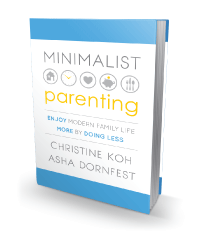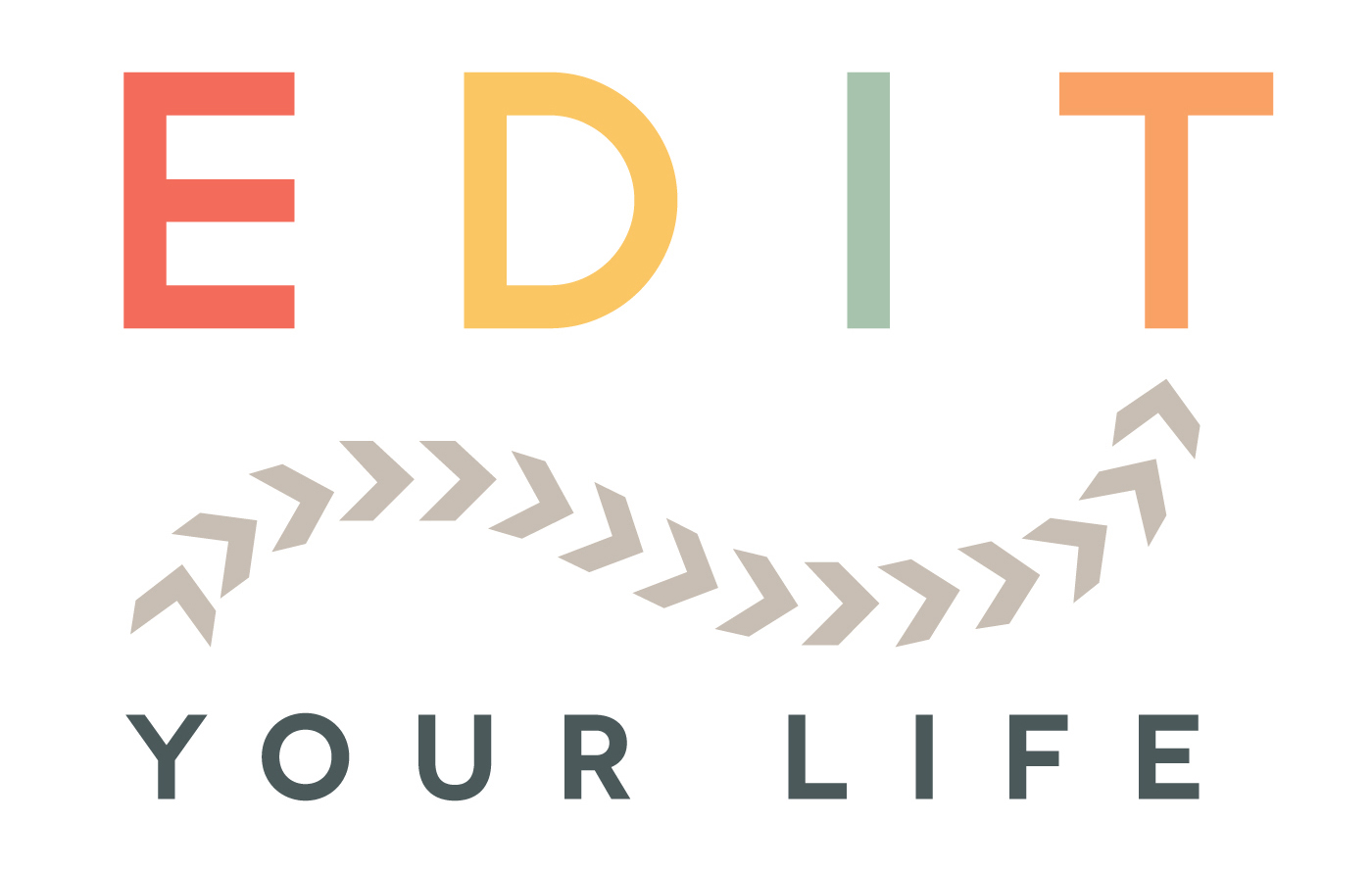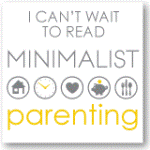Minimalist Budgeting: Share Your Brilliance
Friends, we’ve been talking about welcoming you into the writing journey with us and the time has come.
We’ve spent the last couple of months deep in the writing cave – it has been truly amazing. We’ve still got some work ahead of us but now we want to start adding your brilliance to our completed chapters. Because if there’s one thing we have learned during our blogging journeys, it’s that our communities are incredibly smart.
So here’s how it will work – over the course of the coming weeks, we will toss out specific questions on certain topics via this blog and you can submit your ideas by commenting on the posts here or on Facebook or by e-mailing us directly. There probably will be some overlap between what we’ve already written and the ideas you submit (great minds can think alike after all!), but in cases where you present something novel to us and we want to feature your idea, we will do so by summarizing or direct quoting, and credit you appropriately (anonymity is OK too if you prefer – just let us know!).
Sound good? So without further ado, let’s get started by chatting about money.
What are your favorite minimalist budgeting tips and strategies? Are there simple tools you use for managing family finances/budgeting? What’s your stress-free (or less stressful) approach to finances?
Discuss. We’ve got a bunch of ideas, but we can’t wait to hear from you!
Photo credit: Flickr/Nosey Nest





Mint.com gets lots of thumbs up from folks I know, but I just use the budget/tracking tool inside my bank’s online banking system. It works well, doesn’t require any input, and categorizes things automatically.
My mother always told me to “pay yourself first.” That’s become even easier with the world of direct deposit and automatic transfers. Our money automatically gets dispersed into long term savings (for unspecified purposes), short term savings (for upcoming expenditures, usually for the house), into “play” accounts for me and my husband, and into our main checking account. Although I always try to keep some money in the main checking account as a buffer for the most part we manage to the balance. If the balance is already low by mid month we know we’ll need to be a bit more austere in the remaining weeks. (My husband and I are both paid monthly.) Because the account splits happen up front I know that even in months when we push the limits of our checking account we have also managed to save a bit.
Kim: Now that’s prioritizing. I’m so impressed that saving is automatic for you. For so many of us it’s an “if I have enough at the end of the month” thing, but really, that’s the opposite way to try to approach saving.
This is more work at the onset, but it creates an easy long-term situation.
We set up a separate account that we think of as an escrow account for big (boring) annual expenses: property taxes, insurance premiums, auto licensing, etc..
Annually, I total last year’s fees and divide by the number of pay periods (12 for us since our income is monthly). We direct deposit that amount plus a small cushion to cover rate changes (may $150/year). When the big bills hit, there’s no scramble to assemble the funds needed.
This can also have tangible rewards. We don’t carry an escrow account with our mortgage lender, so we benefit from the interest accruing on our property taxes and insurance (it’s paltry, but it’s ours).
My husband wrote about our budgeting strategy and even made a version of our spreadsheet people could download and use if they like: http://ohmahdeehness.wordpress.com/2012/04/23/where-does-your-money-go-family-budgeting/ – We did like Mint for a while (it just is too general for us) and maybe tracking every expense like we do isn’t minimalist per se but then again it becomes an easy habit. Get home, input the receipts from the day, then you’re done. The data you get is so helpful to knowing where the money goes and where you can feasibly cut. It forces accountability and lets you know with a few clicks whether you’re close to hitting a ceiling in a category. We amortize big expenses so we know true operating costs, kind of like Adrienne’s account for big expenses.
I think this is important to realize — when you’ve got a system and a habit, the day-to-day takes moments. It’s the backlog that scares people (me included). Which is a big argument for starting where you are NOW rather than worrying about getting “up to date.”
Totally right – just start from whenever – we originally started our joint spreadsheet the middle of a month if I recall correctly. Get in the habit of tracking, even just set yourself a 3 month goal. In this age of smartphones you can also just email entries to yourself or snap a photo of the receipt to have less clutter (if you don’t need to save the receipt for returns, that is). We even have a car spreadsheet where we keep all the car costs (gas, etc.) to get a real idea of the cost of each car per day. Pretty eye opening.
Oooh, I love this topic. Because I am super debt averse, but also really lazy!! I automate as much as I can….
I automate as much as I can….
Ditto what Adrienne said above; and I recommend using an online bank (like ING.com) for the escrow accounts. Very easy to set up, monthly transfers are automatic and free, and you can name each sub-account for easy tracking. I currently have automatic monthly transfers made to “Property Taxes” & “House Maintenance Fund” @ ING.
I also keep my emergency fund there, because it’s liquid but not *immediately* accessible. (Transfers take a couple of days.) Keeps me from raiding it impulsively, and also allows me to track a whole bunch of things in one place.
(I love-love-love ING!! And they’re not giving me kick-backs to say that…they just deliver truly phenomenal service.)
My main checking account is with our local credit union, but I also have a separate checking account with the bank who holds our mortgage. In that one, I set up a direct deposit for just enough to cover the mortgage put in every 2 weeks, and then an automatic mortgage payment. I never even need to think about that account. (There are minor advantages to doing this through the same bank in my case; YMMV. In general, I don’t like to have too many accounts because I don’t like to have to keep tabs on them.)
With my credit union, I keep $1000 buffer that I don’t factor into my balance. Thus I don’t need to worry about accidentally going below the minimum and triggering fees.
My employer provides a Dependent Care Savings Account (much like an FSA, but for daycare), which I contribute the maximum too. That’s currently $5000/year, which is conveniently also the max allowed contribution to a Roth IRA. So I don’t file for any refunds on the DCSA until January…when the full $5000 from the previous year is available…and then I transfer it immediately into my Roth for the previous year. 2 birds, 1-ish stones.
I’ve also heard great things about Mint; but as of yet, I haven’t made the time to switch to that. For now I track things in my trusty 15-year-old spreadsheet. I try to reconcile it every few weeks.
I try to reconcile it every few weeks.
Um, you’ve got things so well in hand I can’t imagine you need Mint. If the spreadsheet works, stick with it!
And may I say: WOW
My husband and I get requests for money for charities almost every day, some in the mail, some over the phone. Then we have friends who walk the Three Day or have kids collecting for something. Or our own kids’ school! Finally we’ve set up a monthly budget for charity. Each year we choose 11 charities. We’re trying to choose a variety that reflect our values and are diverse so we don’t load up one type, such as all environmental. Then, each month we send the same amount of money out as a donation. Each charity gets one month, our budget stays even, we have a simple answer to get off the phone. “sorry, we didn’t choose you this year, but we will consider your cause next year.” They usually understand and like the idea. You may notice that we only give to 11 in a 12 month year. We know that friends, family and coworkers will come up with something. Between them, we cover the total for a 12th month, but have the chance to be more spontaneous.
Neat idea. We keep talking about a better system for charities, I like the idea of having an open category but otherwise planning. In the past I’ve picked one and my husband has picked one and then we give to various walks our friends participate in.
I have one checking account, one savings account, one credit card and one mortgage all with the same bank. It makes life very easy even if I do miss out on one particular perk here or there.
To satisfy my need to budget, track, and monitor I have a simple excel spreadsheet. One section projects my cash flow for the upcoming couple of months. All regular expenses, paydays, and semi-regular expenses are categorized. I use the credit card for discretionary expenses and pay it off in full each month. My average credit card expense is added as a cash outflow on the due date.
If I know I need to be a little more frugal in a particular month, I hold off on the discretionary purchases that go onto the credit card. My employer will split my direct deposit into seperate account. Each payday, my 401k, charitable giving, and savings are automatically taken care of. The rest goes to my checking account.
Here’s a question for you: Do you ever feel overwhelmed by the day-to-day work of your budgeting? Many people I know get this fearful or tired look in their eyes, like “I could NEVER do that,” and yet what I’m hearing here is that it’s really not much work once the setup’s done.
I only feel overwhelmed if I am not consistent about where I keep my receipts but actually if you pay with a credit card you can retrace your steps if need be (like if you’re on vacation and don’t want to be documenting as you go). Sometimes it keeps me from spending when I think, “eh, too much work to put an iced tea in the budget.”
I think people that get daunted look at a giant spreadsheet instead of thinking of discrete entries accumulating here and there. It also depends on their needs but I think tracking first is crucial to knowing if, say, $600 a month is reasonable to budget for food for your family.
It’s really really not much work once the set up is done. Trust me – I’m super super lazy.
I do keep an Excel spreadsheet to track balances and such all accounts (and credit cards!), but I only update it once or twice a month.
For those who can’t deal with a lot of data, I have a REALLY simple spreadsheet: I just track the money in and money out of each checking account each month. I get the data when the account statements come (since I have to reconcile my checkbook anyway) and put it in literally once a month for all of the 60 seconds it takes. Then I can tell whether we’re on track to cover spending with revenues or whether we need to make adjustments later in the year. Granted, you need to have at least a modest cushion to do this.
I agree with those above who use their banks’ online sites to track all their accounts in one place – we have USAA and they have a feature that will upload data from our other accounts (local credit union, credit cards, etc) so you can see balances/amounts owed for all of them at a glance. And putting bills on autopay or at the very least online is a HUGE timesaver for us. I even added it to my “what I wish I’d known and done before I had a baby” list, which I send out to friends who are pregnant for the first time.
I don’t prescribe to the idea that one approach will work for everyone-it’s called ‘personal’ finance for a reason. 😉
My personal approach is to create a yearly budget-and track our expenses monthly using Adaptu. I also track our net worth and our debts on a simple spreadsheet as well. I like to monitor our spending in budget in multiple ways just to make sure I’m not missing anything.
To simplify spending we use one card for day to day expenses, and another for travel. We also each have business accounts and use those when necessary.
I think the key to stressing less about money is having a cushion in place, and living well within your means. While automating expenses, bill paying, and savings works for some people-for others (myself included) I prefer to be more hands on. Spending an hour or so a week focusing on our money actually keeps me tuned in to how much we are spending.
We pretend we live on one income for the most part-since we did it for over a decade it’s not that difficult for us. I have my own business, and am a partner in a startup as well. My income fluctuates greatly from month to month so we ‘live’ off of my husband’s income solely still acting like I’m a stay at home mom in some ways.
Since my husband has a corporate job we have health insurance and other benefits that we take full advantage of through his work. That allows me to focus my income on both growing my businesses, and our other financial goals such as saving, debt repayment, home projects, and vacations.
I love online calculators and Mint.com. They make life much easier. When it comes to being a minimalist parent on a budget, my philosophy is “what would a mom in the 70’s or 80’s do?” I think of all of the things I did as a kid. I try to raise my kids with good old fashioned fun. Playing outside, walking, enjoying nature, visiting parks, etc. We play wiffleball, throw footballs, watch movies at home. We splurge on special occasions and go to MLB baseball games when we have the money. These are all activities that make the budget work. When you pick your priorities and set your budget, you learn how to be creative. These strategies work for me.
My minimalist approach to finances (and life in general) is to simplify everything. Automate all accounts, sign up for paperless statements, and pay bills online. I also limit the number of checking, savings and investing accounts I have. Too many of them are hard to keep track of, and tend to clutter your mind as well as your inbox. Lastly, I view my finances simplistically; savings accounts are for saving, investing is for investing, insurance is for emergencies and etc… It’s when we try to mix and match them, that everything gets confusing, which does not facilitate a stress free lifestyle.
I’m really bad about remembering how much I’ve spent for each column in my budget so I have to use the envelope system. On the first of the month, I pull out the cash and place it into each envelope for the month. I don’t even carry my debit card with me, just my envelops in an organizer. This way I am guaranteed to stay within my VERY SMALL budget.
A tip came in last year at Parent Hacks to use gift cards instead of cash for the “envelope system” of budgeting. Seemed smart to me. http://www.parenthacks.com/2011/04/stick-to-your-budget-by-paying-with-gift-cards.html
Teach the kids the difference between “want” and “need”. Don’t just preach it; live it. A family disaster required me to completely re-evaluate our spending habits. I may not have bought myself any new clothes or shoes in the last 3 years, but my kids are happy, well-cared-for, and know they are loved.
HEY, FOLKS! Meet my absolutely amazing cousin Leslee! A woman who knows all about appreciating the important things. Love this.
I have tired 99% of the suggestions above and nothing has worked for me. I am a single Mom getting no child support. Therefore my theory is simply: automate the bill paying online. All other shopping—groceries, haircuts, gas—spend as little as humanly possible.
But I still overspend and bounce things.
I cannot discipline myself to track my expenses daily, weekly…
I need a system that takes my online bank account (USAA which categories my expenses automatically) and generates a chart FOR ME that I can look at daily to see if I am close to my spending limit.
Does this exist?
Hillary, have you tried Mint.com? It generates pretty good charts using your bank accounts.
Agree with Homa — I’m sure there’s a technological solution to the tracking of expenses. Does USAA have anything that does that in its online banking system (my bank does). Even if it’s not perfect, you can just start by getting a handle on the big categories of expenses.
Another strategy, mentioned above, is to go to an envelope system for your groceries + gas (using gift cards, if that’s easier). Come up with a few really inexpensive healthy meals you can keep on hand. My fave at the moment is burrito bowls with brown rice, beans, salsa, shredded cabbage and avocados — if you cook a big pot of dried beans and freeze them, it’s so cheap, and a head of cabbage lasts in the fridge WAY longer than lettuce.
Overall, however, is to START SMALL. You’re a busy single mom with a lot on your plate. Don’t expect yourself to figure it all out on Day 1. Just begin, and take small steps in the direction you want to go. Effort has a way of gaining momentum and rewarding itself as you go along.
Hi Hillary.
My husband and I tried every approach in the book too. And we were still living paycheck to paycheck. What works for others just did not work for us.
But what did work for us finally was going through Financial Peace University (FPU). We started the class in January of this year and it has honestly changed our lives forever. And I promise, nobody is paying me to say that.
FPU is hosted at churches all over. If you are interested you can go to the FPU website, search for a class in your area and attend a free informational session. I hope you will consider doing that. It’s the best gift my husband and I have ever given ourselves.
Best wishes.
Stacie
http://www.daveramsey.com/fpu/classfinder/
Thans for all the great comments above. I am new to this as I’ve become a SAHM after YEARS of corporate work. When we had 2 incomes, my husband and I were very lazy about finances. We are both dedicated savers and maxed out our 401k contributions, etc, but the rest of it was really up for grabs. If we wanted something, we got it – and often justified it by the fact that we worked so many hours, and frankly, eating take-out 4 nights a week (and me buying new shoes whenever I wanted) helped us get through it all. Now that I’m home, we’ve had to make major changes. It has taken me months to figure out where the money goes, and to get the timing right for when my husband gets paid and when the bills are due. But I have found that when I ask myself “do I need that or do I want that” the answers are always easy.
BTW, I love the idea of minimalist parenting. The whole reason I left my 50+ hour a job (which I loved) was because I felt like all I said to my 3.5 year old was “hurry up” and “let’s go.” I had no time with her that was just slow and simple – things I think are so critical for children. So I made the change, and even though it’s been difficult, I’m going to try to find a new way to be. (Christine – I’m also an avid follower of Pivot – was at both events and loved them – so inspiring!)
Emily, that is a huge transition for sure and it’s wonderful it sounds like you’re getting a handle on it! Go you!
And that’s wonderful that you were at both Pivots! Please be sure to come say hello if you can make our next one (tentatively fall!).
My approach is to look at everything I spend and ask myself if there’s not something I actually want more than that. So, if I’m about to spend $10 on a book, I ask myself if there are things in life that I want more than that book, like owning my own home. Which is really more important to me?
In other words, finances come down to values.